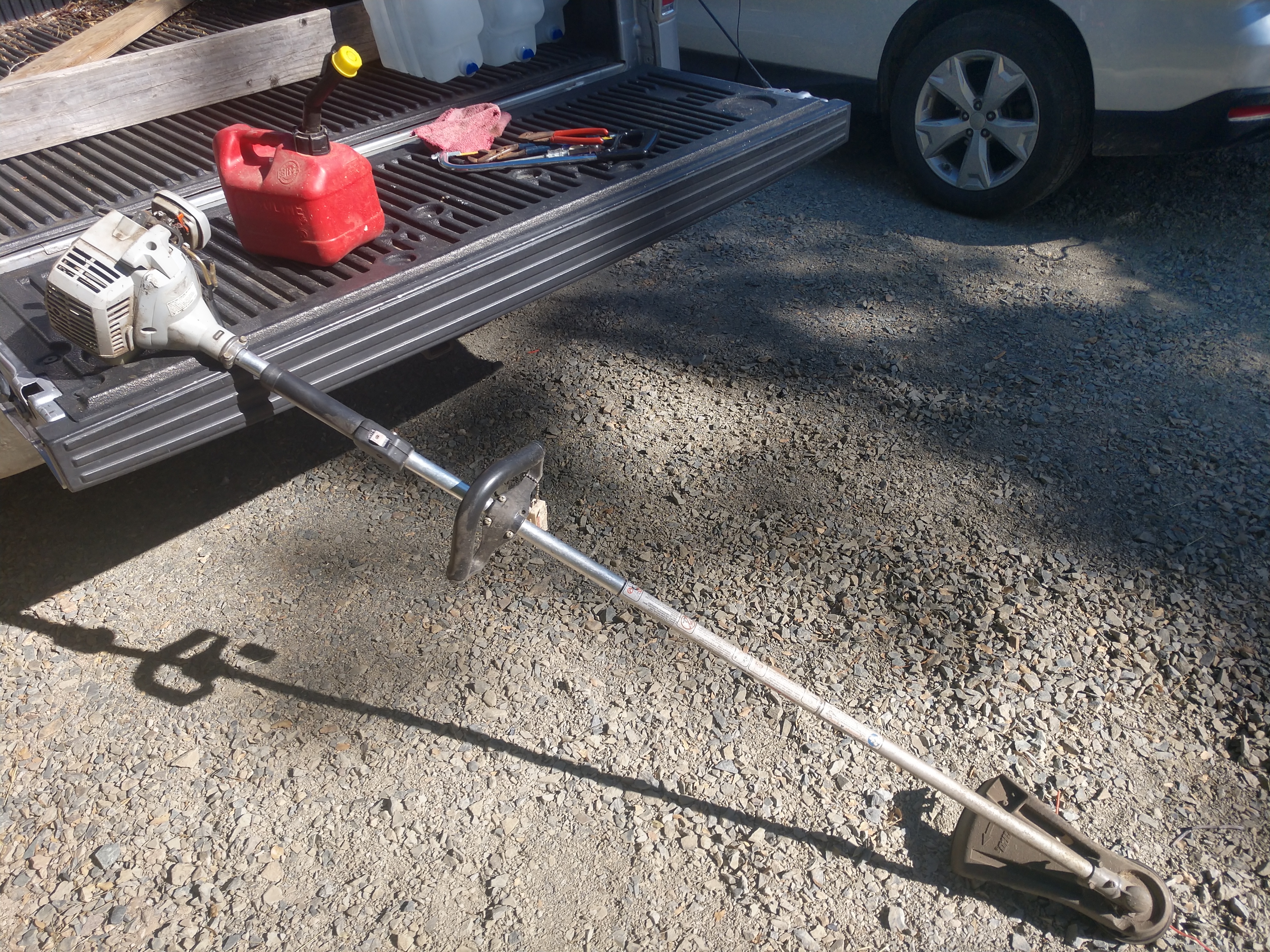 String Trimmer Selection and Safety - June 3, 2020 Jeff Schalau, Agent, Agriculture & Natural Resources University of Arizona Cooperative Extension, Yavapai County String trimmers (also called weed eaters) are useful tools for landscape maintenance professionals and homeowners with large properties. For those considering the purchase of a string trimmer, there are multiple features to consider. When improperly used, these tools can be hazardous to property and bystanders and damaging to landscape plants. Selecting a suitable string trimmer for your needs, keeping it in proper working order, and following a few safety guidelines will help ensure a safe and positive experience. Many small homeowner-sized string trimmers are powered by a 120-volt electric motor. There are also battery-powered, rechargeable models. Naturally, the 120-volt models need to be connected to power via an extension cord. The advantages of the electric models are: no need for mixing gasoline and oil; no engine to maintain; and no struggles to get it started after itís been sitting in the shed for six months. The electric models are also quieter. Conversely, the electric units are less powerful than the larger gasoline engine models. The gasoline engine can be more powerful allows you complete freedom to move about. Gasoline powered line trimmers usually have two-cycle motors which require a gas:oil mixture for fuel (see manufacturer instructions). String trimmers generally have the motor at the upper end of a metal tube and the cutting head at the other end. A flexible cable running inside the metal tube connects the motor to the cutting head. On many smaller machines, the tube is curved near the cutting head. Most professional models use a straight tube. Each has a flexible cable inside the tube. The straight tube models require a beveled gearbox at the head to change the angle of rotation. Straight shaft models are more durable since the drive cable does not have to flex. Homeowner and smaller professional string trimmers generally have a single C- or D-shaped handle for one hand and the operatorís other hand grasps the tube. Some larger professional models have a wide "bicycle-type" handle with a strap that bears the weight of the motor. The "bicycle-type" handle provides better control and is the only type of handle that should be used with a brush-cutting blade. The standard cutting head on most units feeds out plastic string. Bump-feed heads are highly recommended. Here, the user bumps the head on the ground to feed out more line, and the string is automatically cut to length by a blade on the safety guard. Some professional string trimmers allow the substitution of a blade for the string head. The blade may be an X-shaped steel blade for light brush or a saw blade for larger brush. It is important to follow safety guidelines when operating string trimmers. Keep in mind that small rocks can be catapulted by the trimmer head. Serious damage to trees, shrubs and other plants often occurs where string trimmers are used. No matter how good you think you are at using a string trimmer, plants will eventually be damaged if you try to trim around the base of trees and shrubs. It is best to avoid trimming at the base of plants. These areas can be managed by spraying with herbicides or hand trimming. The following are essential steps to successful string trimmer operation. Read the owner's manual carefully. Wear proper protective clothing: eye protection, trim-fitting pants and shirt, sturdy shoes, and hearing protection. Be sure electric units are either double insulated or connected to a 3-prong grounded outlet. Use the type of extension cord recommended by the manufacturer. Do not use electrical powered units in damp or wet conditions. Trimmers can throw objects with force so keep children, bystanders, and pets from the working area. Do not operate the trimmer near windows. Keep the trimmer close but not touching the ground. Angle the unit slightly to the left to discharge trimmings away from your body. Hold the trimmer firmly with both hands in a properly balanced stance. Keep the hot engine and exhaust away from your body. Use only monofilament string recommended by the manufacturer. Never use wire or metal reinforced string as broken pieces can become lethal missiles. Never touch the string while in operation. Stop the motor and disconnect spark plug wire before servicing. Disconnect the power cord on electric units. Refuel and replenish line only with the motor stopped. I have included additional information below. You can follow the Backyard Gardener on Twitter Ė use the link on the BYG website. If you have other gardening questions, email the Master Gardener Help Desk in Prescott (prescottmg@gmail.com) or Camp Verde (verdevalleymg@gmail.com) and be sure to include your name, location, and phone number. Find past Backyard Gardener columns or provide feedback at the Backyard Gardener web site: https://cals.arizona.edu/yavapai/anr/hort/byg/.  String trimmer, gas can, and tools used to maintain and replace trimming line (photo by Jeff Schalau, University of Arizona).
String trimmer, gas can, and tools used to maintain and replace trimming line (photo by Jeff Schalau, University of Arizona).Additional Resources Grass Trimmer Safety, University of California Master Gardener Program safety.ucanr.edu/files/3142.pdf Powered Hand Tools Safety: Lawn Care Training Guide, Virginia Cooperative Extension www.pubs.ext.vt.edu/content/dam/pubs_ext_vt_edu/BSE/BSE-50/BSE-322.pdf |